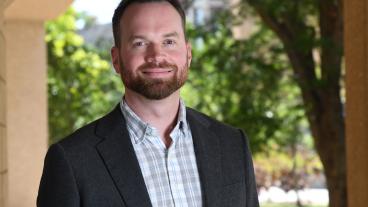Researchers at Colorado School of Mines are co-investigators in a $2 million U.S. Department of Energy project to develop solar-powered desalination membrane technology that could help rural and inland communities treat brackish groundwater at lower cost.
Tzahi Cath, professor of civil and environmental engineering, and Nils Tilton, assistant professor of mechanical engineering, are working with colleagues at the UCLA Samueli School of Engineering and the National Renewable Energy Laboratory on the solar-powered membrane distillation, one of 14 solar desalination projects recently funded by the DOE’s Solar Energy Technologies Office.
“In the future, we’re going to need more desalination because we’ll have less freshwater, more people, more contaminated water and more droughts,” Cath said. “If we need more desalination, someone needs to come up with the energy to power it. Think about the areas that really struggle with water —Texas, Arizona, Florida, Nevada, Southern California — all of these places need water and they have many sunny days.”
Researchers hope that using solar power to fuel the membrane distillation process will cut the cost of treating high-salinity water by approximately 80 percent, to $1.50 per cubic meter of water processed on-site, when long-range transportation costs are factored in.
“Membrane distillation is a very unique process — you’re creating a temperature difference across a membrane, and that membrane is very hydrophobic and doesn’t allow water to stick to it. Water evaporates from the feed side, diffuses through the submicron membrane pores in a vapor form and condenses into highly pure water on the other side of the membrane,” Cath said. “What we’re doing is trying to incorporate a solar-powered heat exchanger into the membrane itself. If we can heat the membrane at the exact point where evaporation needs to take place, we could have substantial savings.”
Cath’s team will focus on the construction and testing of the membrane elements, while Tilton and his group will work on the heat management calculations and design. Researcher at UCLA are developing the membrane itself and NREL is contributing the technical economic analysis of the new process. The project will culminate in a field demonstration of the new technology.
“This will be a very exciting process to simulate numerically,” Tilton said. “In addition to the fluid mixing and heat transport, we will be simulating the application of low voltage to the electrically conducting membranes. This drives electrochemical effects that prevent the precipitation of salts on membrane surfaces.”
Image credit: Photo courtesy of UCLA Samueli School of Engineering
CONTACT
Emilie Rusch, Public Information Specialist, Communications and Marketing | 303-273-3361 | erusch@mines.edu
Mark Ramirez, Managing Editor, Communications and Marketing | 303-273-3088 | ramirez@mines.edu



